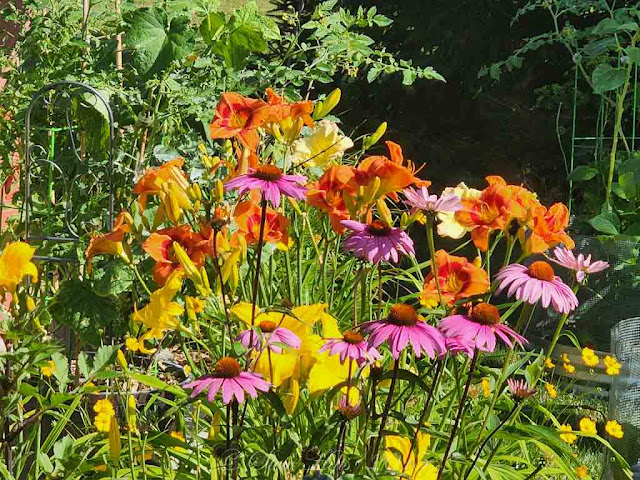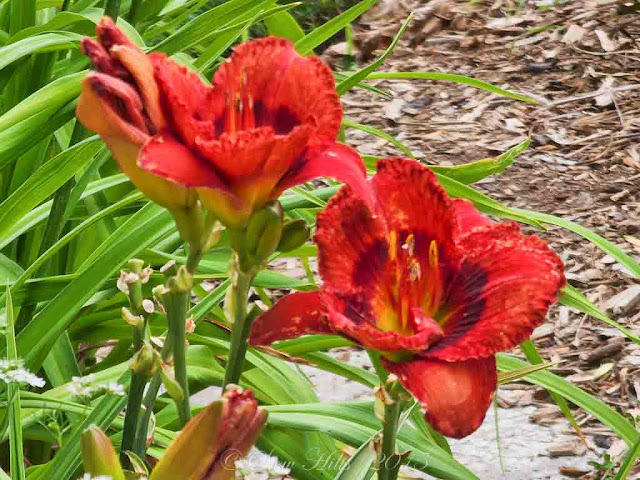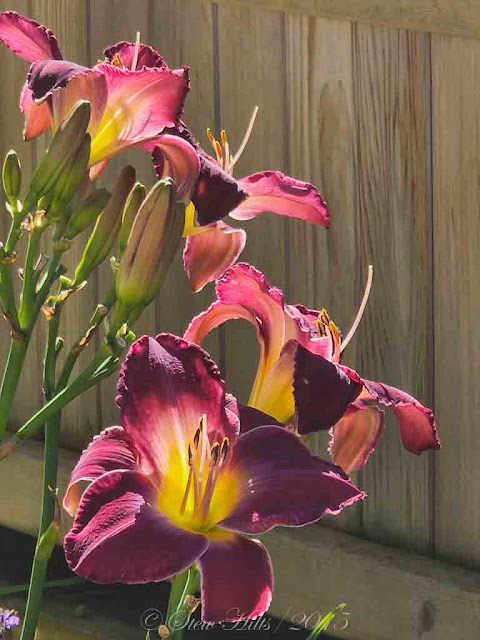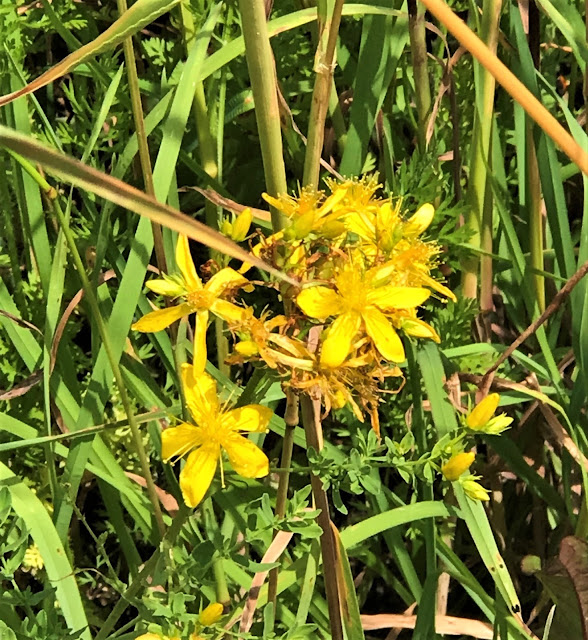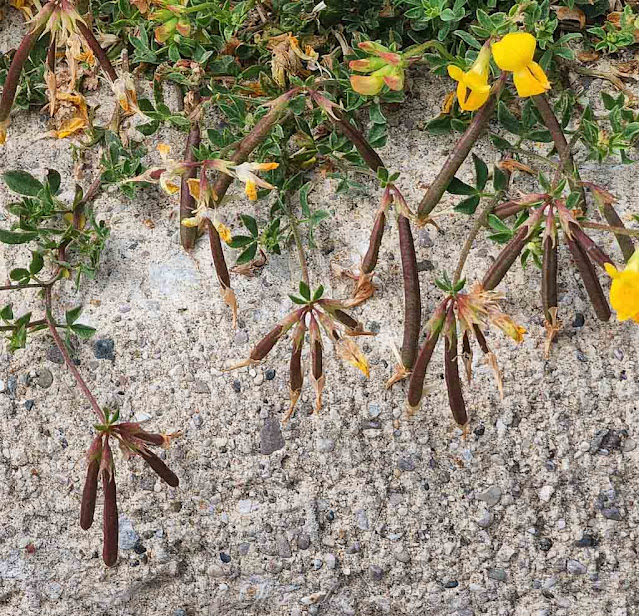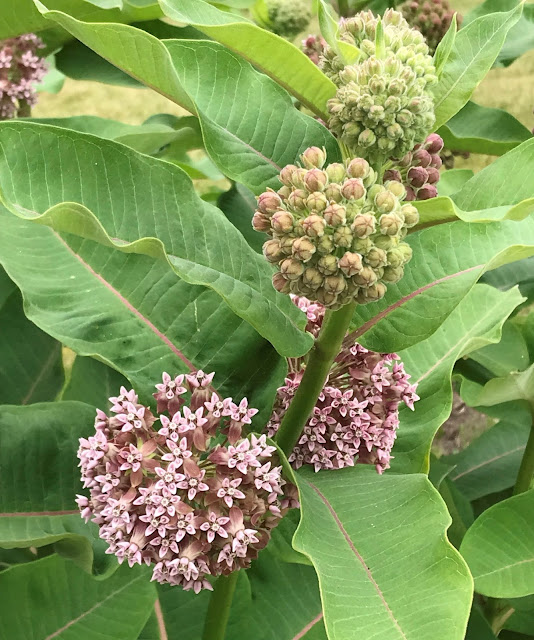It's the time of summer when those flowers most of you know as 'weeds' come into bloom. These plants, which tend to grow in 'waste' corners or 'unused' bits of land, are remarkably hardy and usually spread easily through their seeds. So I've been out gathering pictures, somewhat foiled by the municipal crews or private landowners who come along and mow down these 'flowers of the field'.
Never-the-less I have persevered and gathered together nearly 3 dozen pictures. Sorry if it's a topic that doesn't interest you, but I'm doing it for my own record, so bear with me - or just return in about a week. This will take 3 posts to cover all I have to share.
Birdsfoot trefoil is one of the earliest of this group of flowers, and the most adaptable. Here it is hanging over the concrete curb on a busy road; it will also infest lawns. It's grown as an important crop, part of forage mixes.
Buttercups are an early and pretty one too, sometimes in large amounts in fields. These ones were growing just around the corner and have since been mowed down.
This is Wild Chervil, a nasty invasive plant that spreads by producing billions of seeds. It's found widely now in Grey County, and has moved into town. Its leaves shade out other species so it forms large patches.
This is Field Bindweed, a notorious invasive plant that grows along curbs, infests crops and even infests lawns, like the one above. It's virtually impossible to get rid of too. But you gotta admit it has a pretty flower.
And this one is Hedge Bindweed, an almost identical flower and leaves, but triple the size. I've never actually seen it before last year.
Of course there are lots of thistle, none of which we like very much.
I think we all know Milkweed, the plant that Monarchs lay their eggs on, depending on it as food for their caterpillars. These are in a corner of a front lawn where the homeowner lets them grow, and we have left a few plants in the garden, right outside our living room window. Already a tiny caterpillar on one of them.
And finally for this post, we all recognize the splash of white provided by Oxeye Daisies.
